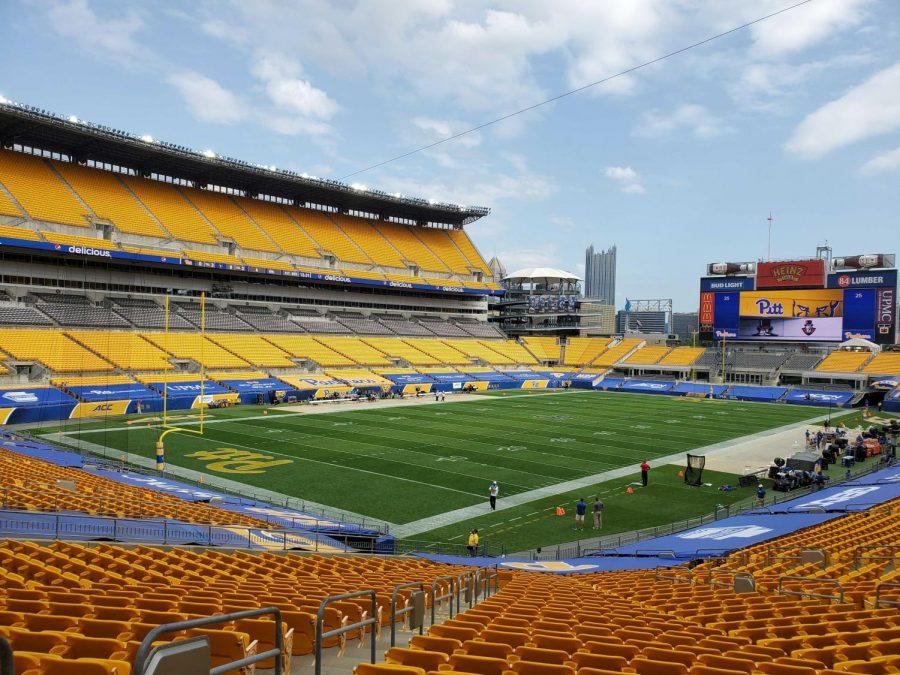The newest college athletic “super-conference” is here. The ACC voted to accept Cal, Stanford and SMU to the conference, bringing the conference’s total to 18 teams, with Notre Dame remaining independent in football.
The decision comes amidst the downfall of the PAC-12 conference, which lost eight members over the course of two years, which gave Stanford and Cal the opportunity to jump ship to the ACC. SMU jumps up from the American Athletic Conference after 11 years.
All of this turmoil and turnover in college athletics stems from media and TV rights deals. With the SEC and Big Ten leading the way with the most lucrative deals, other conferences must expand to keep up.
12 of 15 members of the ACC, including Pitt, voted to accept the three schools into the conference. The decision has consequences, both good and bad, and a potentially ugly ending if things go awry.
The good: The new schools find a home and existing members increase revenue
The acceptance of these universities to the ACC means they’ve found a new home. For Stanford and Cal, the downfall of the PAC-12 doesn’t fall solely on their shoulders. A mixture of poor leadership, inconsistent success on the playing field and bad luck in media and TV rights negotiations led to the conference’s collapse.
The big brands in the conference like USC, UCLA, Oregon and Washington jumped ship to the Big Ten swiftly, and after that, a race ensued to see who could join one of the super conferences first. Luckily, Stanford and Cal found their new home without having to sacrifice moving to conference independence or moving down out of the Power 5.
Stanford and Cal are both highly ranked academic institutions — No.1 and No. 8, respectively, for Division 1 athletes. The ACC is already one of the best academic conferences in the NCAA, so the addition of Stanford and Cal further cements them at the top.
For SMU, their promotion to this new super conference will increase their yearly media and TV revenue and give their athletes a chance to compete at the top of the NCAA.
While the new universities will only receive partial ACC revenue shares until 2033, the expansion offers them long-term security and additional revenue avenues that were not previously available to them in their previous conferences.
For existing members, adding the three schools increases the yearly payout of their media rights deal, which gives each of them more annual revenue. In terms of revenue and security, every member of the conference wins.
The bad: Increased athlete travel and the demise of regionality
The ACC stands for the Atlantic Coast Conference, and prior to its expansion, all its teams resided near the east coast. The expansion adds two California schools and one Dallas-area school.
In the new ACC, teams and players — especially those from Stanford, Cal and SMU — will have to travel hours away for conference matchups. For example, an ACC football championship game between Clemson and Stanford — which currently takes place in Charlotte, North Carolina — would offer a clear competitive advantage for Clemson.
Players already have a lot on their plate between classes, classwork and their sport. Adding increased travel will only add to player stress and negatively affect performance in the classroom and on the playing field.
The conference is looking into Dallas as a middle ground between the three western schools and the rest of the conference. While that might cut the cost of travel, it will not mitigate the problem as a whole. Having a conference with three teams in three different time zones isn’t an ideal situation whatsoever.
The Ugly: ACC implosion looming?
The decision to add Cal, Stanford and SMU wasn’t a unanimous one. UNC, Florida State and Clemson all rejected the expansion. The schools cited travel costs and revenue shares as reasons for their vote.
A big problem with this is that UNC, Florida State and Clemson are three of the biggest brands in all of college athletics, with UNC being a “blue-blood” in college basketball and Florida State and Clemson dominating college football in the 2010s.
If there is any dissension within the conference, the SEC or Big 10 can poach these big brands in the ACC in the coming years, which would be huge losses for the conferences.
Rumors circulated in May that the “Magnificent Seven” — Clemson, Florida State, Miami, NC State, UNC, Virginia and Virginia Tech — hinted at the idea of leaving the ACC before its media rights deal expires in 2036. Various media outlets believe that departures will come sooner than later, with some thinking FSU and Clemson are SEC-bound by next summer’s end.
If these schools leave, what is the future of the other big brands in the conference such as Notre Dame and Miami? As we saw with the PAC-12, conferences can implode quickly. If the ACC’s expansion is enough to push some of its existing members out of the conference, it could have devastating consequences.


